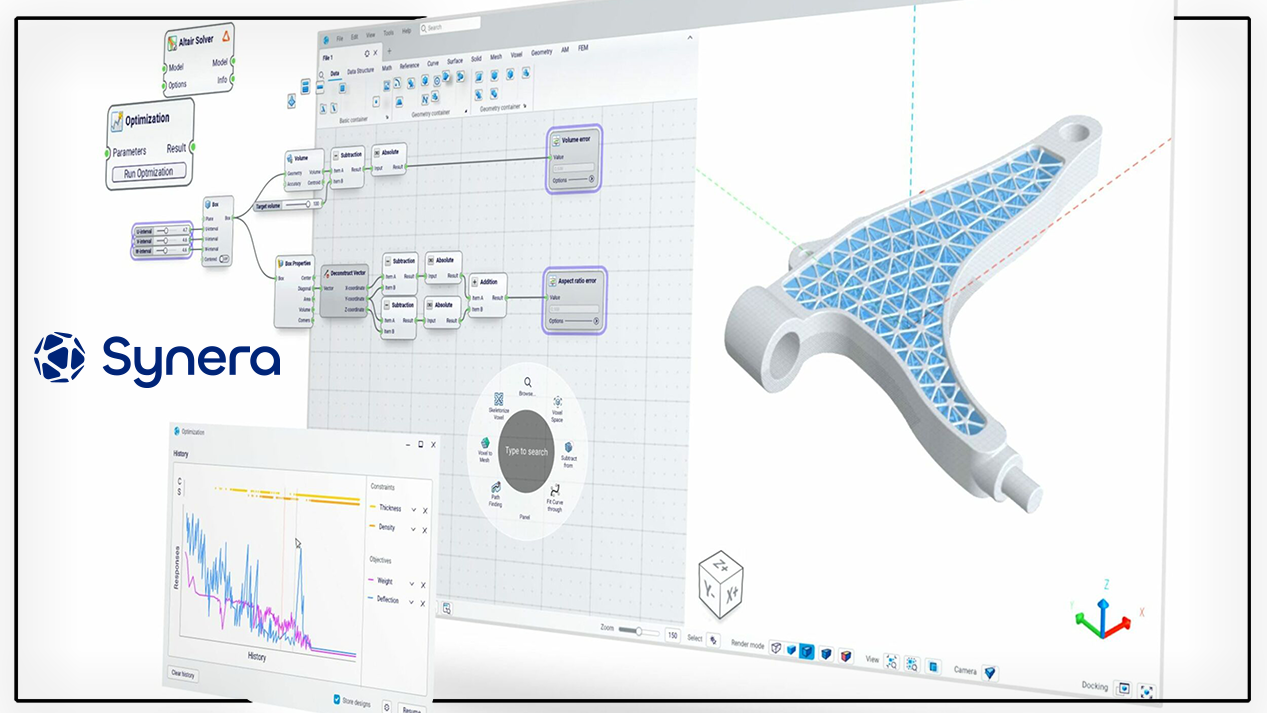Progress depends on balancing creativity and efficiency in the growing engineering domain, and the search for streamlined processes is constant.
Traditional product development methods often involve navigating a maze of tools and workflows, where the pursuit of innovation can be stifled by administrative burdens. In this context, the birth of Synera, a visual engineering tool, signifies not just a solution but a potential paradigm shift in how engineers collaborate and innovate.
In the first episode of the "Connected Engineering" podcast, Moritz Maier, co-founder and co-CEO of Synera, shared insights into the genesis of his platform and the broader challenges facing modern engineering teams. Synera was born out of recognising the inefficiencies inherent in traditional product development methodologies.
Engineering teams across industries face a universal challenge: reconciling the complexities of modern workflows with the imperative of fostering creativity and innovation. This challenge extends beyond software development or product design; it permeates every engineering facet, from aerospace to biomedical engineering.
The Genesis of Synera
Moritz realised the inefficiencies in traditional product development methods and sought a better way. In 2018, this vision culminated in the founding of Synera.
The motivation was clear: the traditional product development methods were fraught with inefficiencies and lacked a cohesive, streamlined approach. Engineers often struggled with disparate tools and complex processes that hindered their productivity and creativity, hence the desire to create a solution that integrates these tools and simplifies workflows.
Bridging the Gap with Synergistic Tools
At the core of Synera's mission is the concept of synergy among tools across various engineering departments. By providing a visual programming language, engineers can automate product development processes without needing extensive coding skills. This democratisation of engineering knowledge allows teams to work more cohesively, leveraging the strengths of each tool in a unified manner.
The mission is to empower every engineer to achieve great things. The platform accomplishes this by offering a visual programming language that simplifies complex engineering tasks. Many engineers face challenges in automating product development due to a lack of programming skills. This problem is addressed by providing a low-code environment where engineers can create workflows using a visual editor, enabling automation without writing code.
Synera Run: Simplifying Complex Workflows
One of Synera's standout features is "Synera Run," a tool designed to simplify complex engineering workflows. Synera Run translates intricate processes into user-friendly interfaces, making them accessible even to non-experts. This approach democratises engineering knowledge and facilitates higher collaboration among team members, enabling everyone to contribute effectively to the development process.
Painlessly Scale Process Automation - Enable unlimited users inside your organisation to executation to execute engineering automations via an easy-to-use web interface.
The platform facilitates the integration of various software tools through add-ins, allowing engineers to choose the best tools for specific tasks. Engineers can connect their preferred software, such as Abacus for simulation or CATIA for CAD, to Synera.
This modular approach is compatible with software development practices where reusable functions and components are created, promoting efficiency and consistency across projects. By focusing on the development of processes rather than isolated parts, Synera enables and simplifies a holistic approach to product development.
Embracing and Augmenting Existing Workflows
A common concern about adopting new tools is the potential disruption to existing workflows. Synera, however, is designed to augment, not replace, current processes. The platform enables engineers to automate repetitive tasks, freeing their time for more meaningful work.
The emphasis on augmenting existing workflows speaks to a broader philosophy of integration and adaptation. It recognises that innovation cannot thrive in isolation but requires a symbiotic relationship with existing practices and processes. By automating repetitive tasks and simplifying complex workflows, engineers can focus on what they do best: pushing the boundaries of what's possible.
The Future of Engineering Collaboration
The story of Synera is a testament to the enduring spirit of human ingenuity. It reminds us that progress is not defined by the tools we use but by the ideas they enable us to realize. As engineering continues to evolve in the digital age, platforms like Synera serve as beacons of inspiration for a future where collaboration and creativity converge to drive meaningful change.

You can try Synera for free and access dozens of apps via the Synera marketplace.

